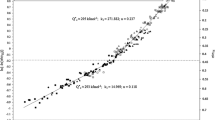Abstract
The paper describes the early and final uniaxial creep behaviour of a Titanium alloy used for manufacturing intermediate power compressor disks and blades. Tests were conducted at the operating temperature (773 K) for such components and for rupture lives up to 3600 hours. Creep curves were fitted using either the conventional 4Θ model or the recently developed 6θ equation. Parameters allowing the interpolation of times to small strains were produced and their accuracy checked against experimental values using distributions found to be most supported by the data. At strains above 0.75% both methods yielded zero mean interpolation errors. At strains above 0.27% and below 0.75% the 4Θ equation produced systematic errors in interpolation but the 6θ function gave errors which were not statistically different from zero. For strains below 0.27% both techniques produced systematic interpolation errors but the 6θ interpolations were always significantly better than their 4Θ counterparts. Both the 6θ and 4Θ techniques produced systematic errors when predicting the failure time using interpolated rupture strains. Unlike the 4Θ function, the 6θ equation produced unbiased predictions of the minimum creep rate and so produced failure time interpolations from the Monkman–Grant relation that were indistinguishable from zero.
Similar content being viewed by others
References
P. H. Morton, Rosenhain Centenary Conference (The Royal Society, 1975).
A. Greasley, Materials Science and Technology 13 (1997) 31.
R. W. Evans and B. Wilshre, in “Creep of Metals and Alloys” (The Institute of Materials, London, 1985).
M. Evans, The Journal of Strain Analysis for Engineering Design, forthcoming.
Idem., J. Mater. Sci. 35 (2000) 2937.
R. W. Evans, Mater. Sci. Technol. 16 (2000) 6.
R. K. Penny and D. L. Marriott, in “Design for Creep” (Chapman & Hall, London, 1995) Ch. 4.
M. Evans, J. Mater. Sci. 16 (2000).
R. W. Bailey, in Proc. I. Mech. E. 131 (1935).
F. Garofalo, in “Fundamentals of Creep and Creep Rupture in Metals” (McMillan, New York, 1965).
R. W. Evans, Mater. Sci. Technol. 5 (1989) 699.
R. W. Evans and P. J. Scharning, Materials Science and Technology 17 (2001) 5.
F. C. Monkman and N. J. Grant, in Proc. ASTM 56 (1956) 593.
R. L. Prentice, Biometrika 61 (1974) 539.
J. F. Lawless, in “Statistical Models and Methods for Lifetime Data” (John Wiley & Sons, New York, 1982) Appendix B.
W. H. Greene, in “Econometric Analysis” (Prentice Hall, New Jersey, 2000) p. 127.
M. Evans, Journal of Materials Processing Technology 54 (1995) 171.
Author information
Authors and Affiliations
Rights and permissions
About this article
Cite this article
Evans, M. The θ projection method and small creep strain interpolations in a commercial Titanium alloy. Journal of Materials Science 36, 2875–2884 (2001). https://doi.org/10.1023/A:1017946218860
Issue Date:
DOI: https://doi.org/10.1023/A:1017946218860




